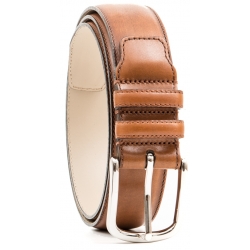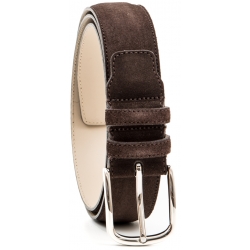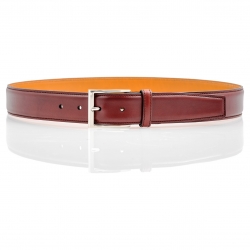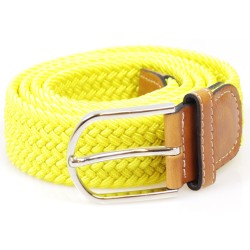- Fast worldwide deliveries
- 14 day returns
- add remove Shoe trees arrow_drop_down
-
add
remove
Shoes
arrow_drop_down
- Oxfords arrow_drop_down
- Derby shoes arrow_drop_down
- Loafers arrow_drop_down
- Belgian loafers arrow_drop_down
- add remove Boots arrow_drop_down
- Monk straps arrow_drop_down
- Sneakers arrow_drop_down
- Espadrilles arrow_drop_down
- add remove Women's shoes arrow_drop_down
- Patent leather shoes arrow_drop_down
- Leather sole arrow_drop_down
- Rubber sole arrow_drop_down
- Skolyx arrow_drop_down
- Yanko arrow_drop_down
- TLB Mallorca arrow_drop_down
- TLB Mallorca Artista arrow_drop_down
- Midas Bootmaker arrow_drop_down
- Swims arrow_drop_down
- add remove Made to Order arrow_drop_down
- Odd Stock arrow_drop_down
-
add
remove
Shoe care
arrow_drop_down
- Shoe care packages arrow_drop_down
- Shoe cream and polish arrow_drop_down
- add remove Shoe brushes arrow_drop_down
- Suede and nubuck care arrow_drop_down
- Cleaning arrow_drop_down
- Sneaker care arrow_drop_down
- Shoe care valet boxes arrow_drop_down
- Saphir arrow_drop_down
- Cordovan arrow_drop_down
- Shoelaces arrow_drop_down
- Insoles, tongue pads, heel grips etc. arrow_drop_down
- Shoehorns arrow_drop_down
- Measuring devices for shoes and feet arrow_drop_down
- Patina and sneaker painting arrow_drop_down
- Shoe repair - Glue, repair patches etc. arrow_drop_down
- Care of equestrian equipment arrow_drop_down
- add remove Clothing care arrow_drop_down
- Engraving arrow_drop_down
-
add
remove
Accessories
arrow_drop_down
- Socks arrow_drop_down
- Belts arrow_drop_down
- Hats and scarves in cashmere arrow_drop_down
- Gloves arrow_drop_down
- Leather bags and accessories arrow_drop_down
- Ice and snow grips arrow_drop_down
- Galoshes arrow_drop_down
- Braces arrow_drop_down
- Nato straps arrow_drop_down
- Bracelets arrow_drop_down
- Lapel pins arrow_drop_down
- Sweaters arrow_drop_down
- Underwear arrow_drop_down
- Books arrow_drop_down
- Gift card arrow_drop_down
- Return freight labels arrow_drop_down
-
add
remove
Guides
arrow_drop_down
-
add
remove
Buying tutorials
arrow_drop_down
- Christmas gift ideas arrow_drop_down
- How to choose the correct size in our shoe trees arrow_drop_down
- Guide - Shoe trees for women's shoes arrow_drop_down
- Size guide for Skolyx, Yanko and TLB Mallorca arrow_drop_down
- Last guide - Guide to all lasts from Skolyx, Yanko and TLB Mallorca arrow_drop_down
- All about Goodyear welted shoes arrow_drop_down
- Choose the right shoes for the right occasion arrow_drop_down
- How to solve your foot problem arrow_drop_down
- The right gap at the lacing on oxfords arrow_drop_down
- Shoe lexicon arrow_drop_down
- All you need to know about red cedar arrow_drop_down
- Save the summer house with products in cedar wood arrow_drop_down
- Shoe trees for football shoes and other athletic shoes arrow_drop_down
- Different types of rubber soles - find the right one for you arrow_drop_down
-
add
remove
Shoe and leather care
arrow_drop_down
- The basics of how to care for your shoes arrow_drop_down
- Guide - Clean, nourish and shine leather shoes arrow_drop_down
- Guide: Cleaning, refreshing and waterproofing suede shoes arrow_drop_down
- Guide - how to take care of your sneakers arrow_drop_down
- Guide - Saphir Medaille d'Or colours arrow_drop_down
- Cleaning shoes arrow_drop_down
- Guide to shoe and leather cleaning products arrow_drop_down
- Guide on how to stretch shoes yourself arrow_drop_down
- Too large shoes? Adjust the fit by yourself arrow_drop_down
- Fix holes in shoes with repair patches arrow_drop_down
- Guide - Save your shoes from road salt stains arrow_drop_down
- How to keep your shoes and feet fresh during summer arrow_drop_down
- Guide - Care for leather products arrow_drop_down
- Guide - All about leather colouring products arrow_drop_down
- Resole Goodyear welted shoes arrow_drop_down
- When can the shoes be repaired - when do you need to buy new ones? arrow_drop_down
- How to care for RM Williams boots arrow_drop_down
- How to care for Bally curling boots arrow_drop_down
- Så sköter du om Uggs arrow_drop_down
- add remove Patina arrow_drop_down
- add remove Stories arrow_drop_down
-
add
remove
Buying tutorials
arrow_drop_down
- add remove Christmas offerings arrow_drop_down
- Black Friday arrow_drop_down
-
add
remove
Info
arrow_drop_down
- About us arrow_drop_down
- Shipping, exchanges and returns arrow_drop_down
- Register returns and exchanges arrow_drop_down
- Our terms and conditions arrow_drop_down
- FAQ arrow_drop_down
- Showroom arrow_drop_down
- Login as customer arrow_drop_down
- Company information arrow_drop_down
- Privattyska arrow_drop_down
- Agb arrow_drop_down
- German return info arrow_drop_down
- Order a return label arrow_drop_down
- Contact us
- Blog
- add remove Shoe trees arrow_drop_down
-
add
remove
Shoes
arrow_drop_down
- Oxfords arrow_drop_down
- Derby shoes arrow_drop_down
- Loafers arrow_drop_down
- Belgian loafers arrow_drop_down
- add remove Boots arrow_drop_down
- Monk straps arrow_drop_down
- Sneakers arrow_drop_down
- Espadrilles arrow_drop_down
- add remove Women's shoes arrow_drop_down
- Patent leather shoes arrow_drop_down
- Leather sole arrow_drop_down
- Rubber sole arrow_drop_down
- Skolyx arrow_drop_down
- Yanko arrow_drop_down
- TLB Mallorca arrow_drop_down
- TLB Mallorca Artista arrow_drop_down
- Midas Bootmaker arrow_drop_down
- Swims arrow_drop_down
- add remove Made to Order arrow_drop_down
- Odd Stock arrow_drop_down
-
add
remove
Shoe care
arrow_drop_down
- Shoe care packages arrow_drop_down
- Shoe cream and polish arrow_drop_down
- add remove Shoe brushes arrow_drop_down
- Suede and nubuck care arrow_drop_down
- Cleaning arrow_drop_down
- Sneaker care arrow_drop_down
- Shoe care valet boxes arrow_drop_down
- Saphir arrow_drop_down
- Cordovan arrow_drop_down
- Shoelaces arrow_drop_down
- Insoles, tongue pads, heel grips etc. arrow_drop_down
- Shoehorns arrow_drop_down
- Measuring devices for shoes and feet arrow_drop_down
- Patina and sneaker painting arrow_drop_down
- Shoe repair - Glue, repair patches etc. arrow_drop_down
- Care of equestrian equipment arrow_drop_down
- add remove Clothing care arrow_drop_down
- Engraving arrow_drop_down
-
add
remove
Accessories
arrow_drop_down
- Socks arrow_drop_down
- Belts arrow_drop_down
- Hats and scarves in cashmere arrow_drop_down
- Gloves arrow_drop_down
- Leather bags and accessories arrow_drop_down
- Ice and snow grips arrow_drop_down
- Galoshes arrow_drop_down
- Braces arrow_drop_down
- Nato straps arrow_drop_down
- Bracelets arrow_drop_down
- Lapel pins arrow_drop_down
- Sweaters arrow_drop_down
- Underwear arrow_drop_down
- Books arrow_drop_down
- Gift card arrow_drop_down
- Return freight labels arrow_drop_down
-
add
remove
Guides
arrow_drop_down
-
add
remove
Buying tutorials
arrow_drop_down
- Christmas gift ideas arrow_drop_down
- How to choose the correct size in our shoe trees arrow_drop_down
- Guide - Shoe trees for women's shoes arrow_drop_down
- Size guide for Skolyx, Yanko and TLB Mallorca arrow_drop_down
- Last guide - Guide to all lasts from Skolyx, Yanko and TLB Mallorca arrow_drop_down
- All about Goodyear welted shoes arrow_drop_down
- Choose the right shoes for the right occasion arrow_drop_down
- How to solve your foot problem arrow_drop_down
- The right gap at the lacing on oxfords arrow_drop_down
- Shoe lexicon arrow_drop_down
- All you need to know about red cedar arrow_drop_down
- Save the summer house with products in cedar wood arrow_drop_down
- Shoe trees for football shoes and other athletic shoes arrow_drop_down
- Different types of rubber soles - find the right one for you arrow_drop_down
-
add
remove
Shoe and leather care
arrow_drop_down
- The basics of how to care for your shoes arrow_drop_down
- Guide - Clean, nourish and shine leather shoes arrow_drop_down
- Guide: Cleaning, refreshing and waterproofing suede shoes arrow_drop_down
- Guide - how to take care of your sneakers arrow_drop_down
- Guide - Saphir Medaille d'Or colours arrow_drop_down
- Cleaning shoes arrow_drop_down
- Guide to shoe and leather cleaning products arrow_drop_down
- Guide on how to stretch shoes yourself arrow_drop_down
- Too large shoes? Adjust the fit by yourself arrow_drop_down
- Fix holes in shoes with repair patches arrow_drop_down
- Guide - Save your shoes from road salt stains arrow_drop_down
- How to keep your shoes and feet fresh during summer arrow_drop_down
- Guide - Care for leather products arrow_drop_down
- Guide - All about leather colouring products arrow_drop_down
- Resole Goodyear welted shoes arrow_drop_down
- When can the shoes be repaired - when do you need to buy new ones? arrow_drop_down
- How to care for RM Williams boots arrow_drop_down
- How to care for Bally curling boots arrow_drop_down
- Så sköter du om Uggs arrow_drop_down
- add remove Patina arrow_drop_down
- add remove Stories arrow_drop_down
-
add
remove
Buying tutorials
arrow_drop_down
- add remove Christmas offerings arrow_drop_down
- Black Friday arrow_drop_down
-
add
remove
Info
arrow_drop_down
- About us arrow_drop_down
- Shipping, exchanges and returns arrow_drop_down
- Register returns and exchanges arrow_drop_down
- Our terms and conditions arrow_drop_down
- FAQ arrow_drop_down
- Showroom arrow_drop_down
- Login as customer arrow_drop_down
- Company information arrow_drop_down
- Privattyska arrow_drop_down
- Agb arrow_drop_down
- German return info arrow_drop_down
- Order a return label arrow_drop_down
- Contact us
- Blog
-
- Shoe trees
- Shoes
- Shoe care
- Shoe care packages
- Shoe cream and polish
- Shoe brushes
- Suede and nubuck care
- Cleaning
- Sneaker care
- Shoe care valet boxes
- Saphir
- Cordovan
- Shoelaces
- Insoles, tongue pads, heel grips etc.
- Shoehorns
- Measuring devices for shoes and feet
- Patina and sneaker painting
- Shoe repair - Glue, repair patches etc.
- Care of equestrian equipment
- Clothing care
- Engraving
- Accessories
- Christmas offerings
- Black Friday
- Shoe trees
Belts
We offer a wide range of belts in our line-up, both various formal belts as well as a bit more casual belts. Our belts are manufactured in factories that we have carefully selected that have a long history of making belts and which use high quality materials.
All our leather and suede belts are produced in Spain, and the leather and suede comes from the same tanneries as our full grain leather shoes. All the buckles of our belts are in solid brass. The style of our belts is classic without any extravagant details, this makes them easy to match with your clothing and a the belt can either make your outfit more formal or a bit more casual depending on which belt you choose. All belts are offered in several different lengths between 85-120 cm so you can find the perfect fit.
We also have braided casual belts in lots of different colours.
How long should a belt be?
Knowing your belt size is really quite simple, as long as you know how to measure. Ideally, the belt should be used in the middle hole of five, and therefore the belt dimensions are given from the middle hole to the outer part of the belt buckle.
To know the right length for you, you can measure your waist with trousers on, but the easiest way is usually to measure from the hole you use on an existing belt that fits well, to the end of the buckle on this one.
At Skolyx we offer most belts in lengths ranging from 85-120 cm, and with five centimetre size ranges. This makes it possible for most people to find the right size. For braided belts how they're measured may vary, read the product description.
Which type of belt lasts the longest?
There's a reason the vast majority of belts are made of leather. It's a very durable material that can last for many years, as long as the quality of the leather is good. Most important is that the leather used is a proper full grain leather, meaning the entire hide is used with the strong natural grain surface intact. This is the type of leather that is strongest, most durable and can be cared for to last a really long time. Hence it is also relatively expensive. All of our leather belts are made from full grain leather.
Unfortunately, most belts on sale are made from cheaper, inferior leather. Either so-called corrected grain, where the grain surface is sanded down and covered with a thin plastic film, which looks fine at first but will inevitably crack. They also like to save on the lining part itself, and use cheap leather there that breaks down quickly.
The very cheapest leather belts are made of what is often called Genuine leather, which in many cases refers to a material that consists is several thin layers of cheap, poor quality leather glued together and then covered with paint to look uniform. Belts made of this type of leather have a short lifespan.
Which way to wear the belt?
There are a few different approaches, but traditionally belts on men should be worn counterclockwise when looking down, so that the end of the belt is over the left leg. For women, it's traditionally the other way around.
Since the vast majority of belts are made symmetrical so they can be worn either way, it's not uncommon for left-handed men to choose to wear it clockwise because you then tighten the belt with your best hand, and for right-handed women to wear it the "usual" way for men for the same reason.
How do you clean and care for belts?
Leather belts are washed with a mild leather cleaner, such as Saphir Medaille d'Or Leather Cleanser or Tarrago WASC Super cleaner. Apply the product to a cotton cloth and rub the surface clean. Allow to dry.
Like all leather products, belts should be cared for regularly, about twice a year is usually sufficient. Here we recommend Saphir Medaille d'Or Leather Lotion, which is deeply nourishing and provides some protection, and which penetrates well into the leather and does not smudge or darken it.
Read more about care for leather products in this guide.
How do you make new holes in belts?
The most common home fix for making a new hole in a belt is to push a sharp awl through it. This is not recommended, since to get the buckle through you have to keep pushing the leather apart more and often end up with an ugly, undersized hole that is awkward to use.
Better is therefore to use a hole punch, which has different sizes of holes and which punches out the entire hole, which is much more gentle on the belt and makes the function equivalent to the original holes.
There are 30 products.






























